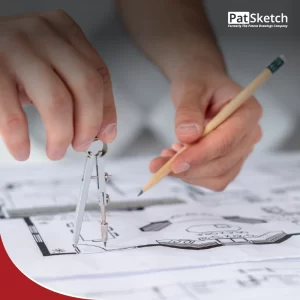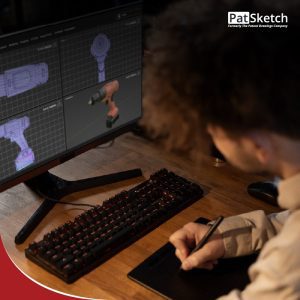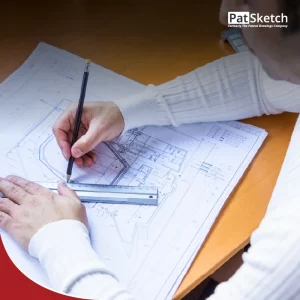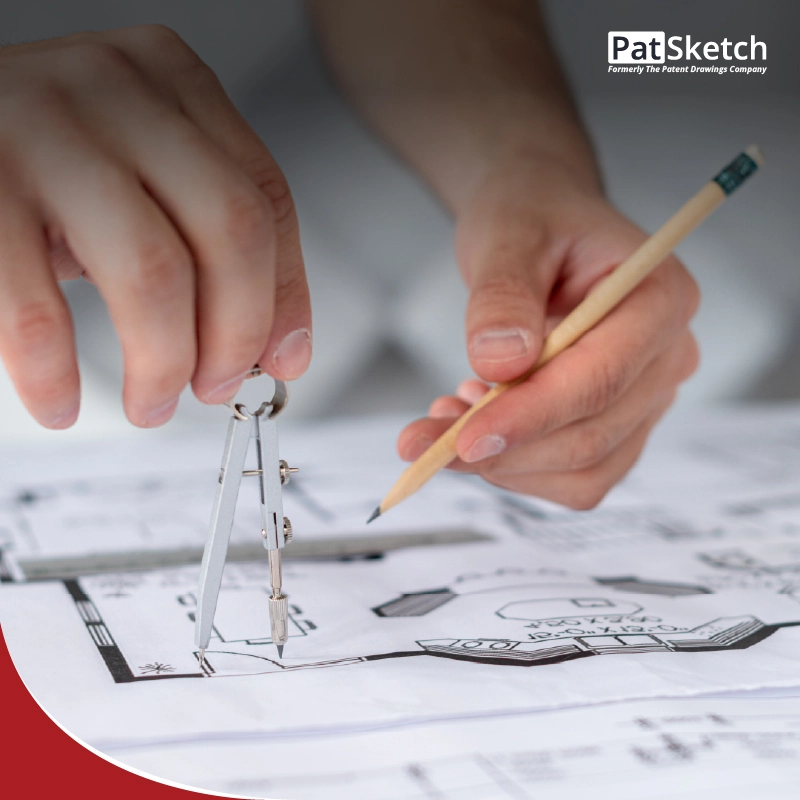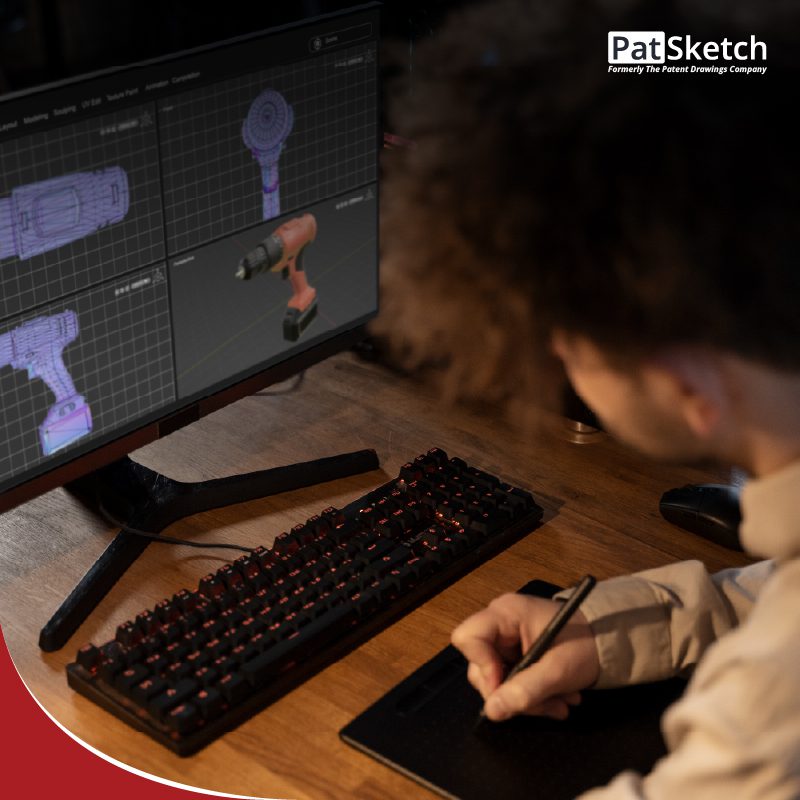“A picture is worth a thousand words” – the phrase perfectly encapsulates the norms of patent drawing. The clean and correct patent drawings are a gateway to the speedy acceptance of a registration application. Broken-line disclosure, a key aspect of patent drawing, is a technique that saves the day while seeking approval for a patent. On the other hand, unclear broken-line disclosures can be fatal to a patent application.
What are Broken Lines Disclosures?
You typically use broken lines for the unclaimed portion of the design. This shows the environment in which you use the article embodying the design. The unclaimed subject matter should form no part of the claimed design or a specified embodiment. A person can use broken lines to define the bounds of a claimed design when the boundary doesn’t exist within the article embodying the planning.
For instance, consider an illustration depicting the outer appearance of a house. The claimed design may not contain the interior, but if disclosed, you can consider insides as part of it. Under such a scenario, an illustrator may wish to separate it via an unclaimed inner broken line, highlighting that the internal depiction is not part of the claimed design.
Therefore, you can use broken line disclosures for illustrative purposes only. It is necessary to disclose the environment related to the design claimed and to depict the boundary of the claim. Moreover, you use broken lines or dashed lines, you can represent the claim embodied the article is represented.
Also Read: How to Correct Patent Drawing Errors Under Rules 11a and 11h
Correct Patent Drawings – Rectifying Unclear Broken-Line Disclosure
The claimed design goes to the boundary but doesn’t include the boundary. However, it is clear from the planning specification that you can use the boundary of the claimed design as a straight broken line, which connects the ends of existing solid lines that define the claimed design. Thus, an individual can then modify and correct patent drawings to feature a straight broken line connecting the ends of existing solid lines defining the claimed portion. Any broken line boundary aside from a straight broken line may constitute new matter.
Related Article: Importance of a Best Patent Drawing Software
Broken Line Usage
- When broken lines cross over the solid line showing the claimed design and show the environment, the surface which lies beneath the broken lines is a component of the claimed design. When broken lines crossover the design part, you can call them as boundaries.
- Broken lines do not show hidden planes, hidden surfaces, or interior things. It does not show the relative importance of parts of a design.
- Broken lines should not cross the claimed design. You must not use its line weight or darkness more than the lines used to show the claimed design. Further, you cannot use them to show an alternate position of a structure in the same view.
Objection on Usage of Broken Lines
Dotted lines or broken lines show the environmental structure of the design and should not cross the representation of the claimed design. Such types of dashed or broken lines may restrict the claimed design and make the disclosure ‘non-enabled’ and ‘indefinite’.
Proper Disclosure via Broken Lines
If broken lines necessarily cross the solid line of the claimed design, then you must add a separate figure, in addition to the figures showing only the claimed portion of the design. Such an illustration should fully disclose the subject matter of the design.
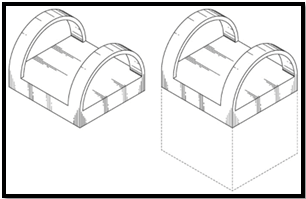
Additionally, there are technical specifications to correct patent drawings. To secure approval for patent design application, the drawing must fulfill the requirements of the country where you wish to file the patent. Thus, it must adhere to USPTO guidelines if you wish to file the patent in the US. Further, it must meet the conditions of Patent Cooperation Treaty (PTO) for applying internationally.
Conclusion
Intentionally or not, the flexible utilization of broken lines can significantly impact the scope of design patent protection. You must always explain the significance of a broken line in patent drawings using specifications. Consider the above-listed steps while creating correct patent drawings and making proper disclosures.
PatSketch’s Patent Drawings Support team helps companies formulate correct patent drawings that face rejection due to various reasons. Visit our website to learn more about our services.
– Sarvil Vikram Singh (Illustration) and the Editorial Team


